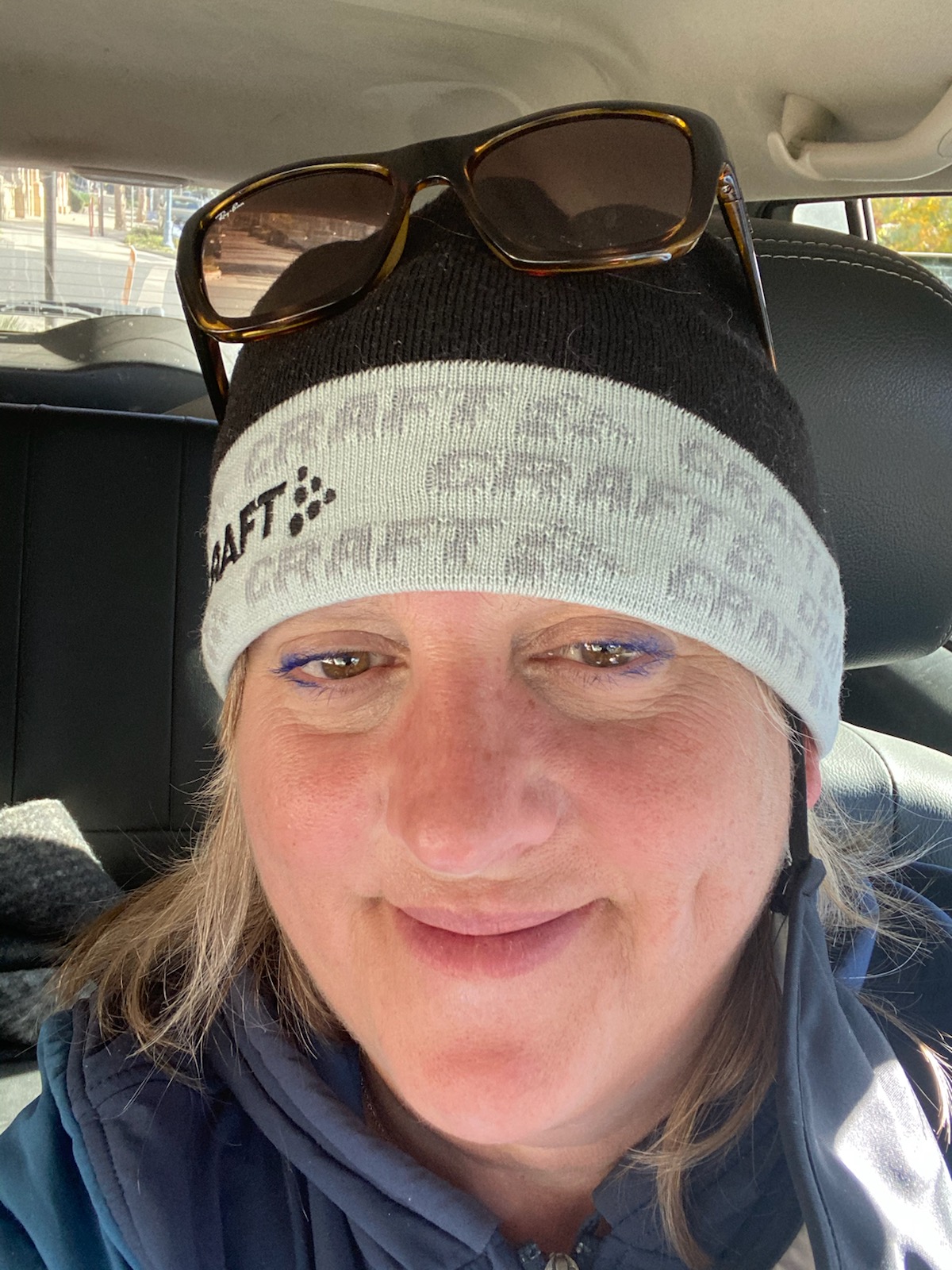If you meet filmmaker/author Leslie Zemeckis, you’re bound to learn some amazing things about tiger trainers and other ladies ‘of questionable pedigree.’ Some we dismiss as “exotic” in a pinch.
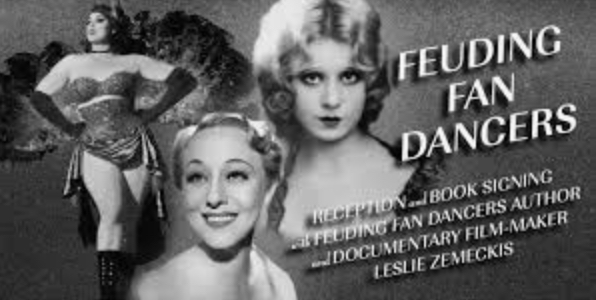
Zemeckis has made it her mission in life to reframe some of the “checkered pasts” of women forgotten on the margins of polite society. There’s her book “Mabel, Mabel, Tiger Trainer,” which was made into a movie last year with Melissa Leo; and while we’ve historically plastered derogatory labels over these women with colorful lives, such as fan dancers, along comes a woman who will change your mind about these misremembered moments of some very special live performers, who happened to wear ostrich feathers to work. One such woman, Sally Rand, died 40 years ago this month.
Quendrith: What was your first exposure to the Fan Dancing World, and why?
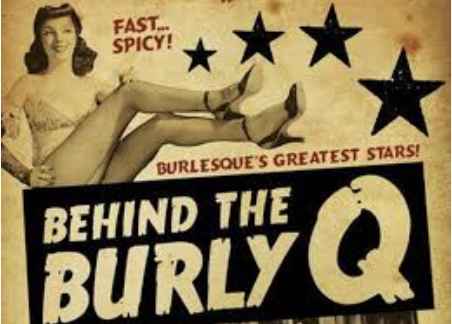
Leslie Zemeckis: Back about 2005 ? I think, God time flies, doing research for what would become “Behind the Burly Q” the documentary, and ultimately the book. Just out of curiosity I was researching burlesque, what it was. Of course, one of the big names was Sally Rand, fan dancer. So that started the interest. I interviewed her son many times, photographed (her), and went through scrapbooks, ultimately doing about 10 years of Sally Rand research.
Quendrith: Who were the forgotten women who touched you the most?
Leslie Zemeckis: Big names and small. Hard to single out. Clearly the ones I’ve written books about: Lili St. Cyr, Sally and Faith Bacon obsessed me. But there are other women whose story isn’t a book, per se, but suffered. They fought for dignity to make a living.
For example, Betty Rowland, I believe going on 102 years old. Her story could be considered “typical.” She was in Vaudeville with her sisters. Hard times hit the country, she and her sisters all got into burlesque (meaning clothes were removed); there was great bias against such, but she was just living her life, having fun, a Minsky [The Minsky Brothers] star. She was jailed for three weeks once, made to sweep, feel [humiliated].
It’s these “small” stories that moved me. Women with little choices who made something of their lives, but still had to suffer the stigma.
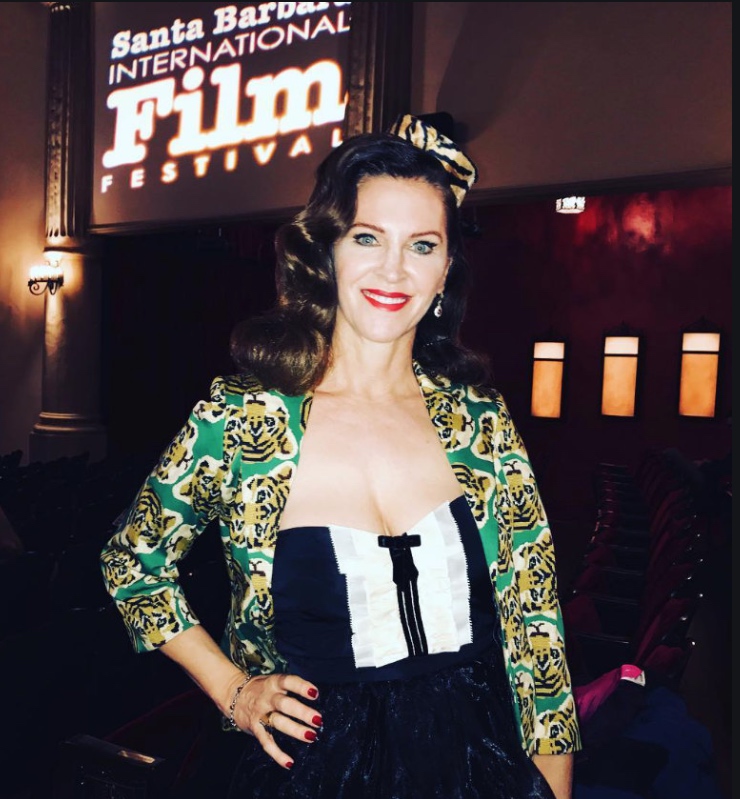
Quendrith: How do we balance the stigma of Bad Girl with the Hot Body dilemma?
Leslie Zemeckis: Not sure what that means. But we judge. We label.
Blonde girl looks like Barbie? She must be dumb.
Girl takes off her clothes? Must be stupid, free sexually. I like finding the person under the label, and under the headlines, which I felt so strongly about Lili St. Cyr.
So many headlines, suicides, many marriages, blah blah. St. Cyr was gorgeous, not necessarily book smart, but worked hard, knew what she was doing, was sophisticated, had taste, beyond gorgeous.
She kinda gave into the label of “bad girl,” but wasn’t really — what is that really? What is a bad girl? That’s society’s judgment and label. Is any man a bad boy [as a pejorative]?
I guess [that label for women and girls] assumes having sex is bad. But that’s our Puritanical society.
Quendrith: Your emoji collection includes stilettos – why do heels turn us on?
Leslie Zemeckis: Makes the leg look great. Pain and beauty.
Quendrith: Why are feathers so sexy, or what is the history of ostrich feathers?
Leslie Zemeckis: Feathers go way back.
They symbolized the wealthy who could afford them, in [boas] and fans. They were dying out, but Sally and Faith Bacon — because of their popular act — literally save the industry.
Feathers are (hollow quills] light, soft, feminine. The fans and fan dancing is hard though, takes strength to do. These girls twirled those fans for 10-20 minutes. They had guns!
Quendrith: Did you find some very tragic stories about these exotic dancers?
Leslie Zemeckis: A lot of tragic beginnings, more than tragic endings.
A lot [of the dancers] came from tough backgrounds, poverty, a lot of abuse, rape, little educated. Most used burlesque dancing to turn their lives around, to escape to become someone.
Yes, some got into drugs, prostitution, [lived in] poverty, but no more than say an actress at the time.
To be a burlesque star, you had to work hard. You had to have it together. You did everything yourself. They produced, and directed their own acts. Often [booked] their own work, and publicized themselves. For most their was little time to “fool around.”
Quendrith: How do the daughters and sons of the aging fan dancers fare in life?
Leslie Zemeckis: In general fine, some have “issues” because of being left behind. A lot of the dancers were single.
On the road most of the year to support the kids and families, [for] some it was very hard. Very. Which I think was why they related to me, opened up so much.
I was so much younger, took an interest without judgement and without the “being left behind.” They, the dancers, had to do what they had to do.
Quendrith: Is there a bias against sexy mothers, from not just men, but women?
Leslie Zemeckis: I think there is a bias against anyone considered, or acting, sexy. It’s stupid. I do think it’s less [now]. But I like to provoke it a bit. People assume way too much.
A body is a body. Boobs are flesh. Beautiful. Get over the shock, prejudice associated with it. Or, ‘oh she can’t be a serious writer, look how she dresses.’ Whatever.
Quendrith: What are your favorite fan dancer clothes, shoes, fans?
Leslie Zemeckis: All of it. The fans, the bling, the rhinestones; I have a vast important collection from Gypsy Rose Lee items to Ann Corio, Betty Rowland, Sherry Brittain, on and on. It’s all great.
Quendrith: What can Millennials learn from these women and their act?
Leslie Zemeckis: That these women were fierce, went on when it was so much harder. Not to take away from today’s women’s struggles, but these women were tough, no nonsense. A [few dancers] I spoke to were severely abused as children. But it hadn’t left a mark beyond: “I was gonna show them, and make something of myself.”
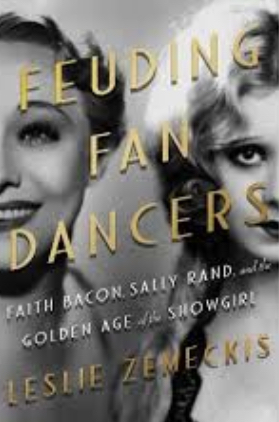
It is always a pull-yourself-up by the bootstrap mentality. Perhaps not dwelling on the “why me,” but just moving one stiletto forward at a time.
Leslie Zemeckis is a filmmaker, author, and emoji designer, who specializes in under-sung female figures of history, those remarkable women – from tiger trainers to mermaids and fan dancers – who most people have forgotten. Her husband Robert is also a director.
Visit fan dancer stories here.
# # #

